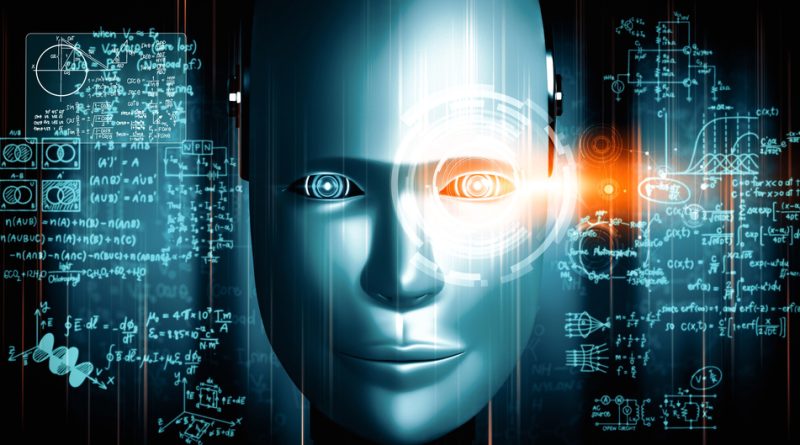AI-Powered Threat Detection: Transforming the Future of Cyber Defense
As cybercriminals grow more sophisticated and threats become increasingly complex, traditional cybersecurity solutions are struggling to keep pace. Legacy systems, built around static rules and reactive measures, are no match for the dynamic and evolving nature of today’s cyberattacks. In this shifting landscape, artificial intelligence (AI) is emerging as a powerful ally for organizations aiming to bolster their defenses.
In fact, 63% of security professionals now believe AI is essential for improving threat detection and response, according to recent surveys. But how is AI transforming cybersecurity, and what does this mean for the future of threat detection and prevention?
The Shortcomings of Legacy Cybersecurity
Traditional cybersecurity tools, such as rule-based systems and Security Information and Event Management (SIEM) platforms, have long been the foundation of cyber defense. However, these solutions face significant challenges:
- Too Much Noise: Rule-based systems generate excessive alerts, making it difficult for security teams to identify genuine threats amidst the noise.
- Blind Spots: SIEM tools excel at log-based event detection but often fail to identify behavioral anomalies or detect sophisticated attacks.
- Reactive Posture: Legacy systems are designed to respond to known threats, leaving organizations vulnerable to novel attack methods.
This reactive approach leaves security teams perpetually playing catch-up, especially as cybercriminals increasingly leverage advanced technologies like AI and machine learning (ML) to outsmart traditional defenses.
How AI is Revolutionizing Cybersecurity
AI is addressing these challenges head-on, bringing speed, precision, and adaptability to threat detection and response. By analyzing vast datasets in real time, AI-powered tools can uncover hidden threats, detect patterns, and anticipate attacks before they occur.
1. Proactive Threat Detection and Prevention
AI enables tools like next-gen SIEM and Security Orchestration, Automation, and Response (SOAR) to go beyond reactive measures:
- Next-Gen SIEM: These systems continuously analyze user and network behavior, flagging anomalies in real time. This proactive monitoring allows security teams to intervene before threats escalate.
- SOAR Platforms: AI-powered SOAR integrates disparate security tools into a cohesive system, automating threat detection, triage, and response workflows. This streamlines operations and enables faster, more accurate responses to emerging threats.
2. Enhanced Security Analytics
AI-powered analytics platforms incorporate advanced capabilities like User and Entity Behavior Analytics (UEBA) to provide a holistic view of an organization’s security posture. These platforms detect unknown and emerging threats by analyzing patterns and behaviors across users, devices, and networks.
3. AI-Driven Investigations
Generative AI takes threat detection to the next level by diving deep into malicious incidents:
- Forensic Analysis: AI examines threats to identify their scope, root cause, and potential impact.
- Improved Playbooks: AI-driven insights inform the creation of new detection models and response strategies, ensuring organizations stay ahead of evolving threats.
Generative AI: A Game-Changer in Cyber Defense
The rise of generative AI has brought new capabilities to threat detection and prevention. By recognizing nuanced indicators—such as altered URLs in phishing emails or atypical file behaviors—generative AI helps organizations detect and neutralize threats before they reach their targets.
A 2024 survey revealed that 55% of companies plan to deploy generative AI solutions for cybersecurity. These tools are particularly effective in combating sophisticated threats like ransomware and phishing, equipping organizations with a proactive edge in the fight against cybercrime.
Implementation: The Path to AI-Driven Cybersecurity
To successfully integrate AI into their cybersecurity strategies, organizations need clear goals and a well-defined roadmap:
- Set Benchmarks: Identify key priorities, such as improving detection accuracy or reducing response times.
- Adapt and Retrain: Continuously update AI models to account for new threats and evolving attack methods.
- Align with Business Goals: Ensure cybersecurity initiatives support broader organizational objectives, from compliance to customer trust.
The Benefits of Embracing AI
Organizations that adopt AI-powered cybersecurity solutions gain significant advantages:
- Faster Threat Detection: AI processes data at lightning speed, identifying threats in seconds rather than hours.
- Reduced False Positives: Advanced algorithms minimize false alerts, allowing security teams to focus on genuine risks.
- Improved Resilience: AI’s predictive capabilities enable organizations to anticipate and prepare for future attacks.
Looking Ahead: AI as the Future of Cyber Defense
As cyberattacks become more sophisticated, AI is proving to be an indispensable tool for security teams. It enables automation, enhances threat detection, and provides actionable insights, empowering organizations to stay ahead of constantly evolving threats.
“Cyberattacks are not slowing down, and neither should we,” said a leading cybersecurity expert. “AI is not just a tool—it’s a necessity for building resilient defenses in an increasingly hostile digital landscape.”
For businesses still relying on legacy solutions, the time to adapt is now. By embracing AI-driven security platforms, organizations can protect their assets, safeguard customer trust, and prepare for the future of cybersecurity.
The message is clear: In the battle against cybercrime, AI is no longer optional—it’s essential.


Hi there, just became alert to your blog through Google,
and found that it’s really informative. I am gonna watch out for brussels.
I’ll appreciate if you continue this in future. A lot of people will
be benefited from your writing. Cheers!
If you are going for most excellent contents like I do, only visit
this website daily since it presents feature contents, thanks
Wonderful work! This is the kind of information that are meant to be shared
across the net. Disgrace on the search engines for now not positioning this submit upper!
Come on over and consult with my web site
. Thanks =)
Undeniably consider that which you stated.
Your favorite reason seemed to be on the web the
simplest thing to keep in mind of. I say to you, I definitely
get irked even as people consider concerns that they plainly
don’t understand about. You controlled to hit the
nail upon the top as well as defined out the entire thing without having side effect , other
people can take a signal. Will likely be again to get more.
Thanks
I believe what you said made a bunch of sense. However,
what about this? what if you were to write a killer post
title? I mean, I don’t wish to tell you how to run your website,
but suppose you added something that makes people want more?
I mean AI-Powered Threat Detection: Transforming the Future of Cyber Defense – The Hack
Academy is kinda plain. You should peek at Yahoo’s home page and watch how they create post headlines to grab people to open the links.
You might try adding a video or a picture or two to get readers interested about
everything’ve written. Just my opinion, it might bring
your posts a little bit more interesting.